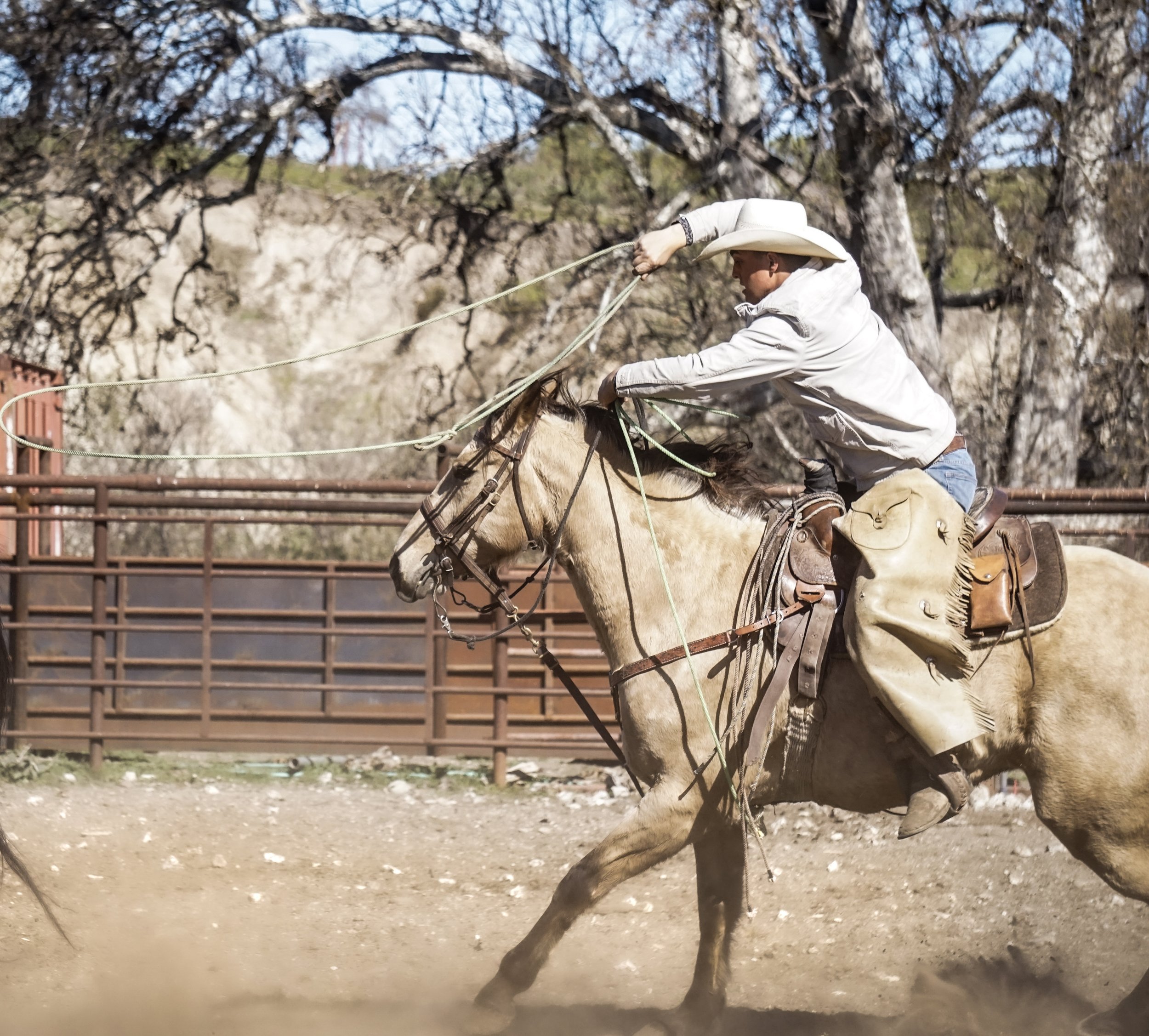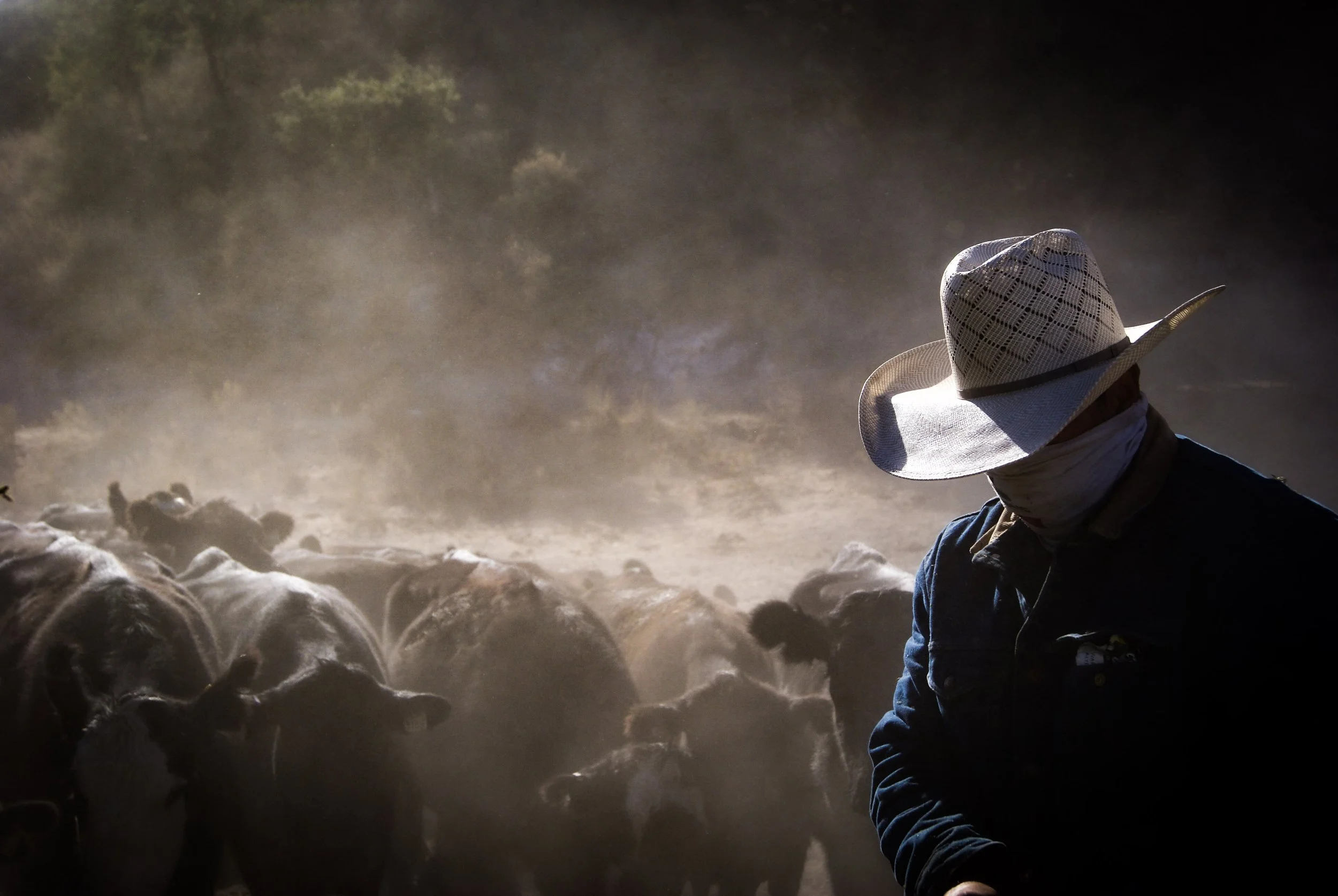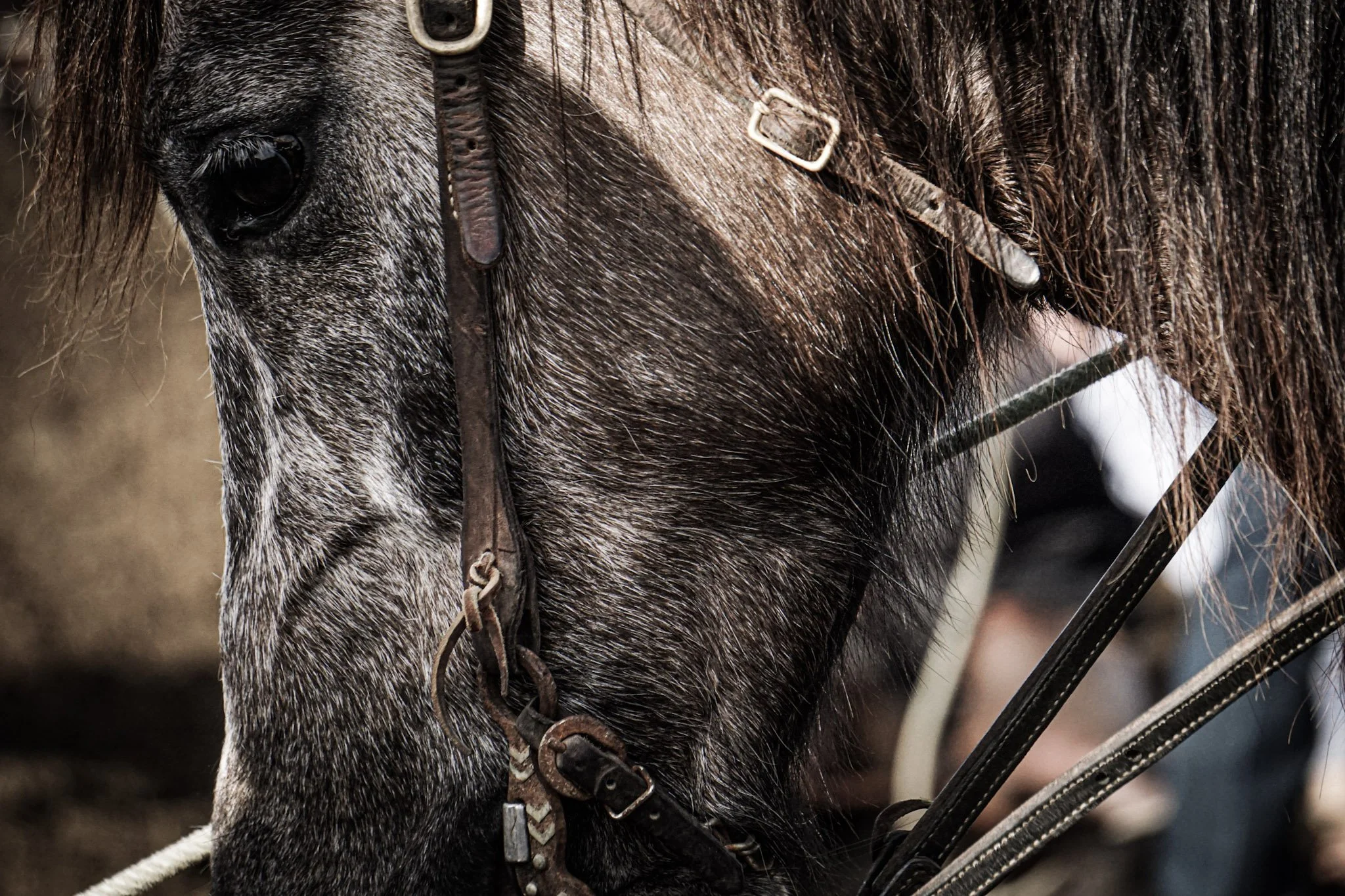
THE COWBOYS OF SANTA YNEZ
Photographer Christina Ciaccio captures the coyboy life
A TASTE OF THE WILD WEST
By Christina Ciaccio
After relocating to Santa Ynez, CA in 2020, I surprisingly found myself immersed into what seemed like the wild west. I had heard about the vineyards and the beautiful serene country, but had no idea I would encounter real working cowboys and cattle ranches.
I was no stranger to horses, being a lifelong equestrian, however growing up in Orange County and competing in the hunter/jumper world, was a far cry from ranch life in Santa Ynez. Within the first few weeks I met Juan Laura, a third generation saddle maker, at his saddle shop in town. Rows of western saddles and tack surrounded him in his outdoor western shop. Juan is the real deal and if the cowboys need something fixed, Juan’s the guy to do it. While I was at Juan’s, a cowboy drove up with his truck and trailer. His horse was tacked up, ready to go to work, as well as his working dog who sat patiently in the back seat. Little did I know that this working cowboy, Jorge Padilla, was about to introduce me to a culture that would change the course of my life.
A few weeks later, I had received an invitation from Jorge to go to my first branding. I told him I can ride, but my horse is not a ranch horse. So he said he would bring me a horse.
The next day I met him at the branding. I had never seen anything like it. Trailers were parked everywhere with local cowboys getting their horses ready. Jorge had brought me one of his reliable ranch horses and I was thrilled to be able to ride out and gather the cows with a few cowboys. Once we brought the cows into the corral, a few other cowboys began to sort the calves from the moms.
I couldn’t help but start taking pictures. One guy was at the gate letting the cows through, but blocking the calves from going out. The other cowboys were responsible for sending the cows his direction.
Once sorted, two teams of cowboys would each rope a calf, a header and a heeler, and once successful, three cowboys would run out and bring the calf to the ground. Someone would tie the calf’s legs together, and then one cowboy would tag the calf’s ear, one would castrate, another would brand, and yet another would vaccinate. It was fast paced and if you didn’t stay on your toes you would be run over, either by the horses, calves running, or the cowboys.
I was doing my best to stay out of the way. After a few hours all of the calves had been worked through, and I knew I was hooked.
I began photographing all aspects of the working cowboy and ranch life in the next few years. The entire process of a cattle ranch from preg checks, fixing waters, feeding, gathering, weaning, and even loading the calves who had grown up and were ready to ship out. The life of a working cowboy is not glamorous, but it is a lifestyle and they love it. To have seen first hand the grit and even patience the job requires has been such a gift. The values that are up-holded in this world and the culture the ranch life embodies, is something we need to preserve for future generations. Cowboys are a dying breed in California, but my hope is to shine a light on this small little piece of western life that still exists here.









